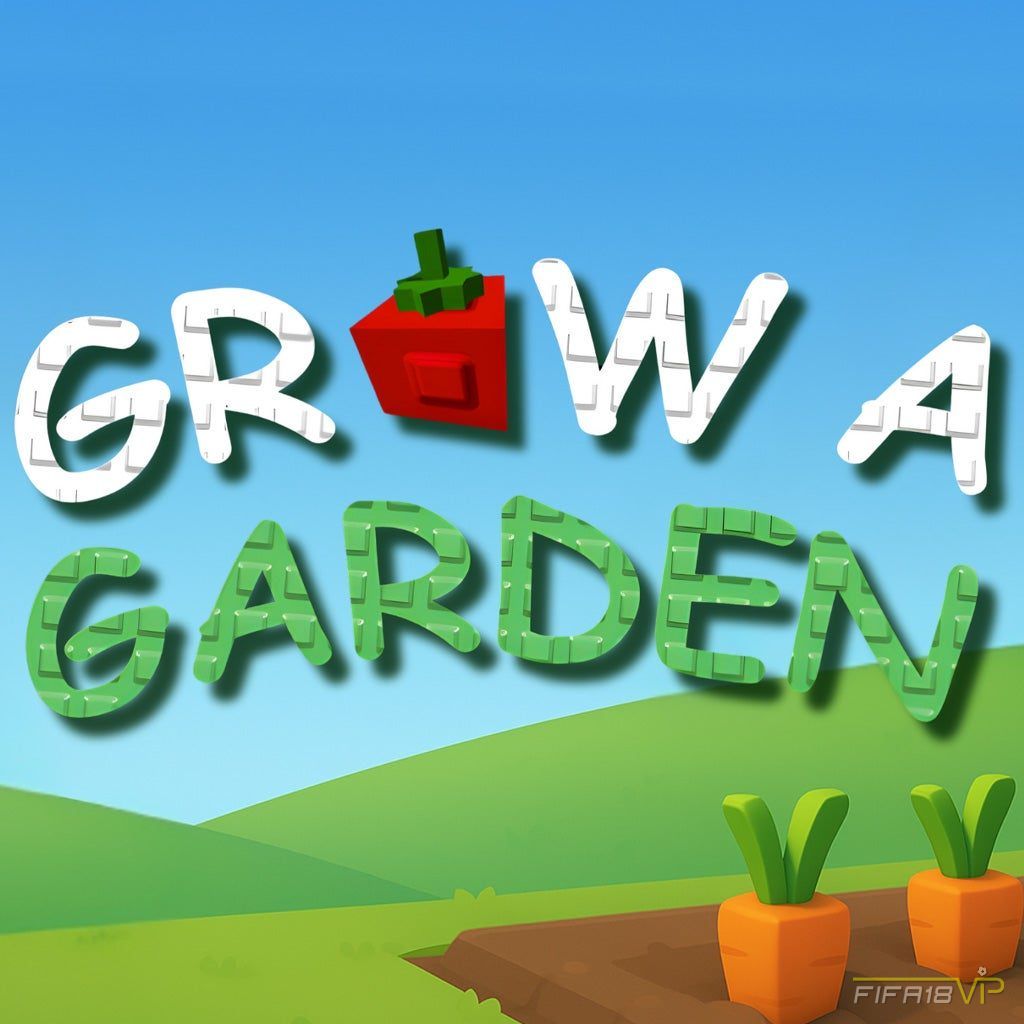Corruption Blooms: How Grow a Garden Reinvents Itself with Every Update
In the whimsical and strangely addictive world of Grow a Garden, the art of
horticulture isn’t just about planting seeds and watching them grow—it's a
delicate dance of strategy, economy, fantasy, and mutation. Part simulation,
part management game, and part living ecosystem, Grow a Garden Items has carved out a
unique niche in the gaming landscape. Its charming visuals and deceptively
simple mechanics draw players in, but it's the ever-evolving gameplay that keeps
them coming back.

Every major update to Grow a Garden does more than expand the game’s content. These patches redefine the game’s fundamental systems. The introduction of new crop mutations, environmental modifiers, and economic shifts ensures that no two seasons feel alike. It’s a game that actively mutates alongside its plants—reshaping itself with every patch.
The latest update, ominously titled Corruption, is perhaps the most radical yet. While previous updates have toyed with hybrid seeds or weather effects, Corruption transforms the very idea of what a healthy, productive garden should look like. With it, Grow a Garden evolves once again—turning beauty into decay, and profit into peril.
From Cozy Cultivation to Strategic Survival
At its core, Grow a Garden has always been about more than farming. Beneath its colorful petals lies a surprisingly deep layer of tactical complexity. Players manage a limited plot of land, balancing soil types, weather conditions, pest control, and seed genetics to maximize yields. The game’s mutation system is its heart: crops don’t just grow—they evolve. From simple crossbreeds like "Berrycorn" (a sweet corn-strawberry hybrid) to nightmare-fueled flora like the "Venomspike Tulip," each plant carries the potential to fundamentally alter a player's approach.
In this way, each patch has felt like a new “season” in both literal and metaphorical terms. Some patches have emphasized yield over quality; others have encouraged rare hybrids over volume. The player community often discusses the current “meta” like esports fans—sharing optimal strategies, seed pairings, and even economic speculation on the in-game market.
So when Corruption was teased with a single line—“Not everything that grows is pure”—players braced themselves for upheaval.
The Nature of Corruption
The Corruption update adds a new mechanic that slowly spreads through your garden like rot. It begins innocently enough: a single corrupted seed packet may show up in your starter inventory. Plant it, and you might get a "Darkroot Carrot" or a "Spitevine." They look wrong—twisted stems, shifting textures, even subtle visual glitches. But they grow faster than standard crops, and their market value is absurdly high. There’s a temptation to lean into corruption for profit.
That’s the trap.
Corrupted plants leave behind tainted soil. Tainted soil reduces the viability of non-corrupted seeds, weakening their stats or nullifying beneficial mutations. Over time, if unmanaged, entire plots become unusable to anything but the most grotesque of flora. And here’s where strategy deepens: do you resist corruption for long-term sustainability, or embrace it for short-term profit?
The update doesn’t stop there. It introduces a new crop stat—"Resilience"—which determines how well a plant can grow in corrupted soil. High-resilience crops become crucial for hybrid recovery or late-game transitions. New mutations unlock only when growing corrupted and clean plants side-by-side, encouraging complex arrangements that teeter on the edge of collapse.
Garden Gone Rogue: The New Threats
Grow a Garden has always had its share of threats—pests, blight, and weather anomalies—but Corruption adds a new category: Sentient Weeds. These animated plant-lifeforms spawn randomly in corrupted soil and can overrun neighboring crops if not dealt with swiftly. Unlike pests, they can’t be removed with pesticides. Instead, players must plant specific "Purifier" crops nearby or activate rare environmental buffs like "Moonlight Bloom" to cleanse an area.
This adds a semi-defensive layer to the game—suddenly your garden needs zoning, planning, and borders. Crop placement becomes not only about synergy and yield but also about infection control. This change transforms garden layouts into battlegrounds of containment versus expansion.
Players can now equip "Ward Totems," craftable items that reduce corruption spread within a certain radius. Managing your totem budget becomes vital in large-scale gardens, particularly in late-game challenges like the new "Rotwood Arena" mode—a timed survival garden event where waves of corrupted weather, sentient weeds, and decaying soil converge to stress-test even the most optimized layouts.
The Economy of Decay
Economy in Grow a Garden has always been driven by market demand, which fluctuates based on crop rarity, mutation difficulty, and seasonal bonuses. The Corruption update throws a wrench into this dynamic. Corrupted crops fetch incredibly high prices on the open market, but they come with long-term consequences. Overreliance on them floods the market, crashes their value, and leaves behind poisoned plots.
New economic strategies have emerged from this chaos. Some players engage in corruption cycling—using tainted crops only in outer plots they later abandon. Others focus on soil purification farming, using low-value crops to slowly cleanse the land and selling the restored plots on the new Garden Exchange, a player-to-player land trading system introduced in this update.
The update has also added a Blackroot Bazaar, a semi-legal in-game market that only deals in corrupted items and mutations. Here, players can barter tainted seeds for rare crafting ingredients or unlock secret recipes not found in the main game. It’s a risky, lucrative side-path—and a perfect symbol of what the Corruption update brings: temptation and consequence intertwined.
Community Response and Meta Evolution
Within a week of the Corruption update’s launch, forums, Discord servers, and Reddit were ablaze. Some players praised it as the most engaging and lore-rich update to date. Others struggled with the steep difficulty curve introduced by corruption mechanics. Entire YouTube channels began crafting corruption-specific strategy guides, while Twitch streamers attempted “Pure Garden” challenge runs—winning the game without using a single corrupted seed.
Meta theorycrafting exploded. Players debated the viability of partial corruption versus full corruption builds. New crop tier lists emerged, and the once-beloved "Glowbloom" was dethroned as the meta king by the newly-discovered "Wyrmfrond," a corruption-resistant fungus with market immunity.
Interestingly, a niche subset of players has embraced aesthetic decay—intentionally letting their gardens become twisted, overrun landscapes of fungus, black petals, and crimson roots. These players share screenshots of eerie, hauntingly beautiful garden layouts that seem straight out of a dark fantasy novel. Grow a Garden has inadvertently birthed a new aesthetic movement—Corrupted Cottagecore.
Under the Surface: Themes and Narrative Implications
While Grow a Garden has never leaned heavily into overt storytelling, environmental storytelling has always been one of its strengths. With Corruption, however, the developers have begun weaving a more explicit narrative. Cryptic messages appear in corrupted seed packets. Glitched visual cues occasionally flash on-screen—snippets of code, forgotten lore, or hints at a larger world beyond the garden walls.
One recurring line, “The soil remembers what the roots forget,” has sparked massive speculation. Some believe this update is a prelude to a major expansion that will take players beyond their individual gardens and into a shared, corrupted world. Others see it as a commentary on over-farming, environmental decay, and the moral costs of unchecked growth—turning Grow a Garden into a subtle allegory about ecological responsibility.
Bloom or Doom?
Ultimately, the Corruption update elevates Grow a Garden from a niche strategy sim to a bold experiment in dynamic game design. By disrupting its own mechanics and challenging player assumptions cheap Grow a Garden Items, the game continues to evolve alongside its community. It dares players to flirt with decay, to test the boundaries of growth and greed, and to find beauty even in blight.
For seasoned gardeners, Corruption is a thrilling new challenge. For newcomers, it’s a daunting, fascinating world where every seed holds a secret, and every root may twist in unexpected ways.
In a genre often content with incremental content updates, Grow a Garden dares to mutate.
And if this update is any indication, the garden is only going to get stranger from here.



